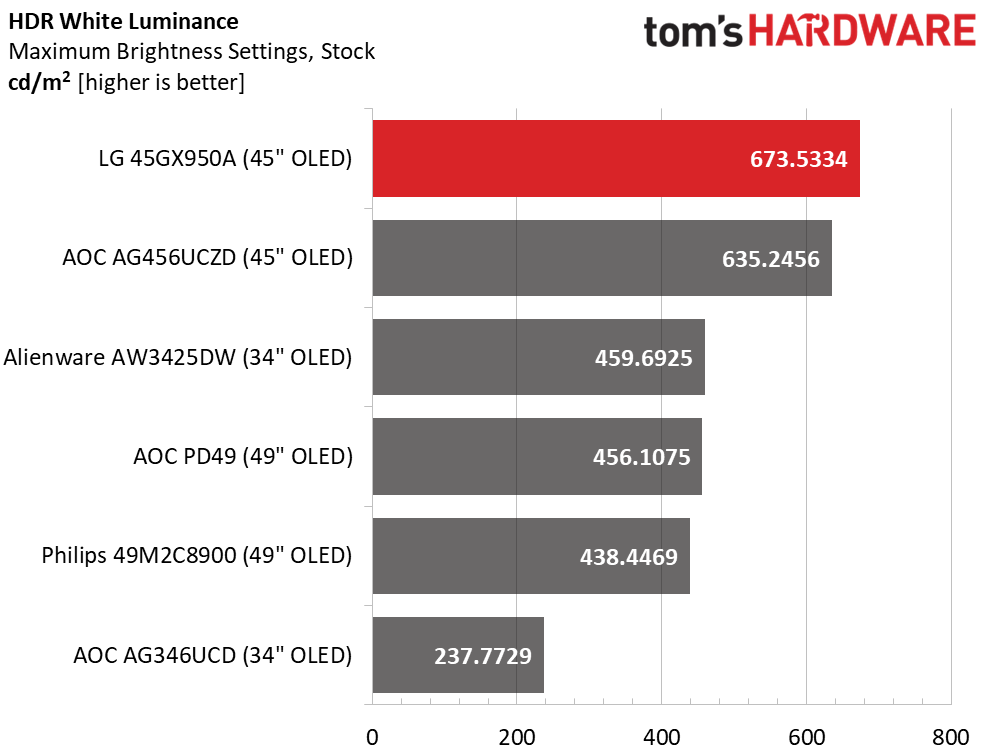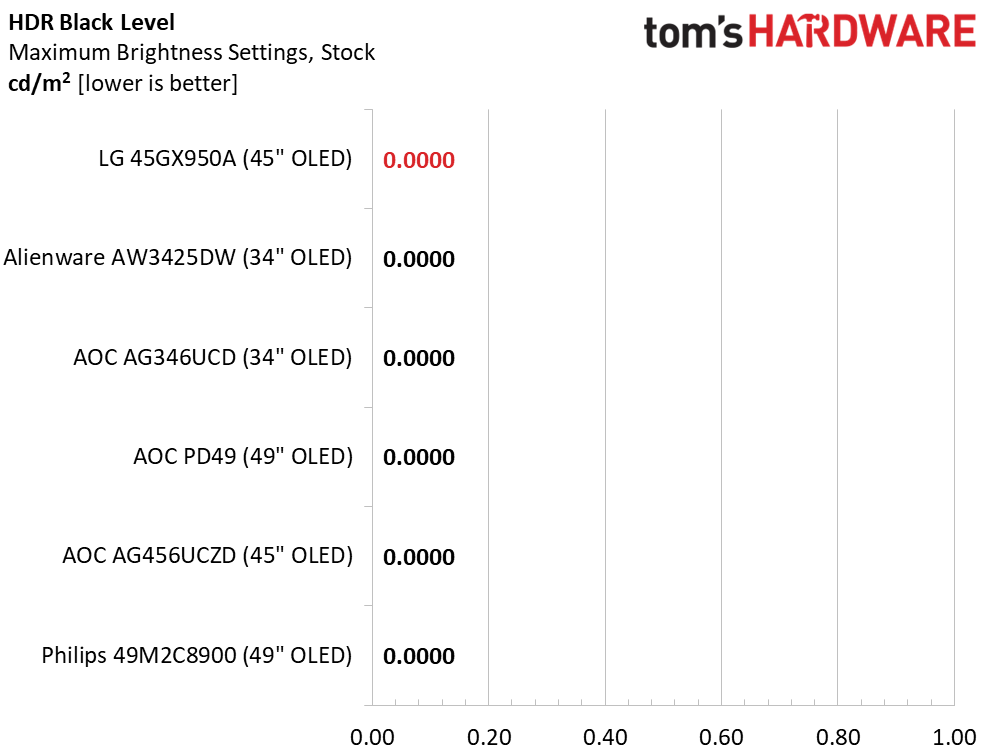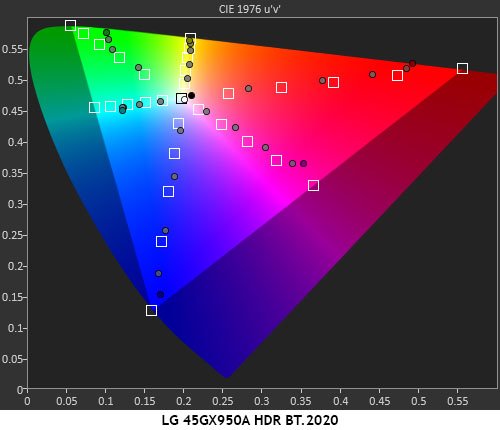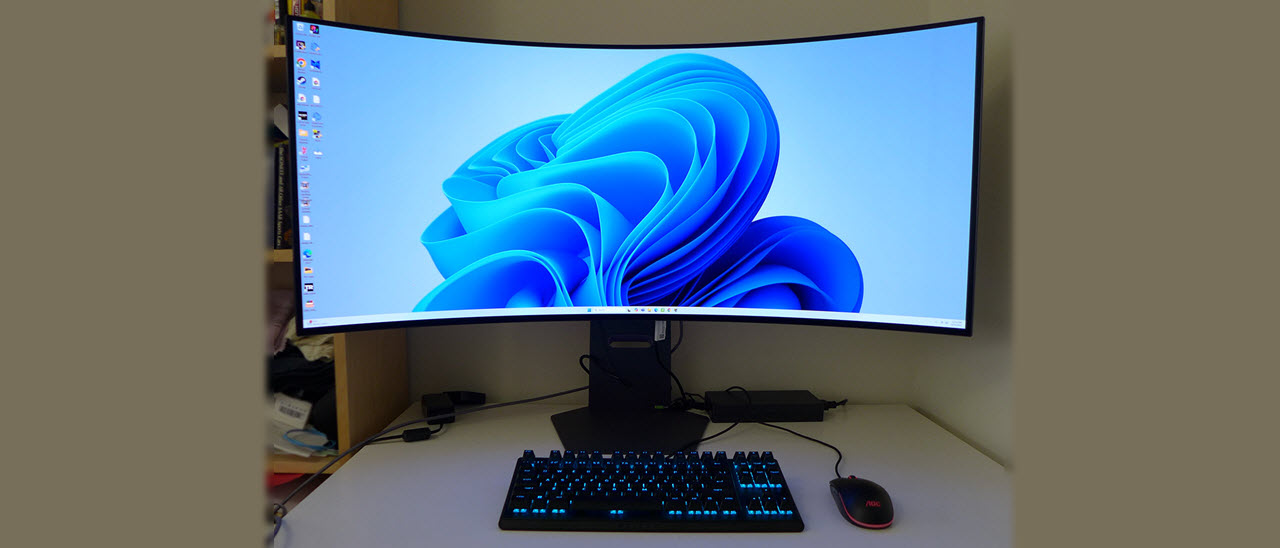Why you can trust Tom's Hardware
Our HDR benchmarking uses Portrait Displays’ Calman software. To learn about our HDR testing, see our breakdown of how we test PC monitors.
The 45GX950A switches to HDR mode automatically when fed an HDR10 signal. It leaves six of its picture modes accessible and includes adjustable brightness and the Peak Brightness options too.
HDR Brightness and Contrast



I measured a 25% window pattern with Peak Brightness on high and came up with 673 nits. LG’s claim of 1,300 nits from a 1.5% window is not in doubt. This is a seriously bright monitor and that is amplified by its size. If you play in a dark environment, you might be reaching for the brightness slider. Few monitors allow adjustments in HDR mode, but the 45GX950A does. I recommend Peak Brightness high for all HDR content, but if you find that too bright, you can dial it down to low or off. Black levels and contrast are immeasurable. This is excellent performance.
Grayscale, EOTF and Color



The 45GX950A shows a slightly warm grayscale with most errors around 4dE or less. This is a forgivable issue because red errors are less visible than green or blue ones. The EOTF tracks a little dark from zero to 30% then rides above the line to the tone map transition at 70% brightness. I was able to see all the fine detail in actual content. I noted that lower settings of Peak Brightness dropped the trace further below the reference, making some shadow detail hard to see.
HDR color is generally oversaturated in all colors by 5-15%. This is typical of the HDR monitors I’ve tested. There is plenty of punch in all HDR content and I never had difficulty seeing fine detail. This is solid performance. In the BT.2020 chart, the 45GX950A runs out of color at 85% red, 70% green and 95% blue.
Test Takeaway: The 45GX950A has an HDR image on par with other non-Quantum Dot OLEDs. Color is accurate with natural hues and clear detail. It fully covers DCI-P3 but has a little less BT.2020 volume than a QD-OLED. It is a bit brighter than its competitors and offers adjustments for peak level and variable brightness. Most HDR monitors don’t include those options.
MORE: Best Gaming Monitors
Get Tom's Hardware's best news and in-depth reviews, straight to your inbox.
MORE: How We Test PC Monitors
MORE: How to Buy a PC Monitor

Christian Eberle is a Contributing Editor for Tom's Hardware US. He's a veteran reviewer of A/V equipment, specializing in monitors. Christian began his obsession with tech when he built his first PC in 1991, a 286 running DOS 3.0 at a blazing 12MHz. In 2006, he undertook training from the Imaging Science Foundation in video calibration and testing and thus started a passion for precise imaging that persists to this day. He is also a professional musician with a degree from the New England Conservatory as a classical bassoonist which he used to good effect as a performer with the West Point Army Band from 1987 to 2013. He enjoys watching movies and listening to high-end audio in his custom-built home theater and can be seen riding trails near his home on a race-ready ICE VTX recumbent trike. Christian enjoys the endless summer in Florida where he lives with his wife and Chihuahua and plays with orchestras around the state.
